Modern recruiting is a competitive business but an effective recruitment strategy will identify the talent that’s right for the role, that suits the organization’s culture, and will stick around.
High staff turnover and employee engagement are big issues for HR teams in this competitive landscape too. We’re seeing a real emphasis on getting things right at the recruitment stage to avoid the costly side effects of ill-matched hires.
This guide outlines how to form an effective recruitment strategy, including information on HR tools to support the hiring process, how to measure progress, and expert advice on avoiding costly hiring mistakes.
What is a recruitment strategy?
A recruitment strategy is a formal plan that sets out how a business will attract, hire, and onboard talent.
A recruitment strategy should include headcount planning, employee value proposition, recruitment marketing strategies, selection criteria, tools and technologies, and succession plans. This should all be covered by the recruitment budget.
Don’t forget to consider diversity and inclusivity when developing talent acquisition strategies - top talent could be lost if this is overlooked.
What does a recruitment strategy look like?
A recruitment strategy involves multiple strategic approaches working in tandem to ensure the best talent is found and hired. These include:
Internal recruitment
Internal recruitment can be a huge time saver as there isn’t a protracted period of interviews or onboarding. However, it can lead to a lack of diverse ideas and innovation.
External recruitment
The most common method for finding new staff, external recruitment brings new ideas, fresh approaches and renewed energy. However, it can take a long time and be expensive to find the right candidate as external recruitment requires thorough screening processes and full onboarding.
Developing the employer brand
Our employer brand needs to resonate with candidates - they need to feel aligned with the organization’s perceived image and see themselves in it. Show potential employees the values and the culture of the organization and how staff feel about working there to develop your employer brand and attract the best candidates.
Direct advertising
Direct advertising in papers, trade magazines, trade journals and notice boards is a great way to target active job seekers, but this approach won’t unearth passive candidates who aren’t looking for a new role.
Social media
Social media has become one of the most important recruitment strategies for businesses. Using the right platforms is key, as well as having the right content. But recruiters should always remember that social media can be a hotbed for gossip and sharing negative experiences so the need for great candidate experiences is essential.
Recruitment agencies
It’s common to outsource recruitment requirements to recruitment agencies. Even though it may cost more to have them manage the whole process, they are well-connected experts who are good at finding talent with the right skill set. They can be particularly valuable when searching for niche roles.
Job boards
Monster, Reed and Indeed are three of the most popular online job boards - they cover nearly every category of job posting and industry. There are also specific industry-led job boards like TestGorilla that target a niche like medical representatives.
Job boards are easy to use and make roles discoverable for candidates.
Employee referrals
This increasingly popular recruitment strategy is a combination of external and internal recruitment. Put simply - existing staff refer people they know for vacancies. This method is very cost-effective and staff are more likely to refer people they trust and will reflect well upon them, resulting in a stronger candidate pool.
Internships and apprenticeships
Internship and apprenticeship programs are fertile ground for identifying and nurturing the future leaders of an organization. These employees can be moulded to the organization’s culture and they’ll grow to understand the systems in place from the ground up which is highly valuable as they advance.
Why might a business need to reinvent its recruitment strategy?
Modern recruitment is hyper-competitive. Attracting top talent to an organization and meeting their demands grows more complicated every day, as does persuading them to stick around.
Why? Because the goalposts are always moving. Emerging technologies, different selection processes and shifting expectations are all rewriting the rulebook for what a recruitment strategy should look like, as well as how we motivate and treat employees.
We’ve identified six recruitment trends that have a major impact on what our recruitment strategy, recruitment processes and recruitment marketing should look like.
1. Candidate desires
A global shortage of talent means candidates can dictate the kind of career they have more readily. Their preferences tend to be more varied and transient than those of the generations before.
Rather than stay with a single organization for many years, today’s workers spend time building a portfolio of experience, resulting in more career changes over a shorter period.
This makes them more attractive to potential employers as candidates with experience across multiple markets who are willing to work cross-sector can be more adaptable and self-motivated, but it also means employers must continually focus on employee retention.
2. Social media
Technological change has made both employers and potential hires more accessible to each other. Active networking and social media means information is more readily available, affecting the ways we recruit and the ways we promote our workplaces.
For recruitment agencies and departments, the pressure is on to use data to develop more targeted and insightful recruitment strategies. Using social media as a window into your culture can be a vital step in attracting like-minded people to your brand.
3. Candidate attraction
The candidate experience from beginning to end must be an enticing one, especially when potential hires will be receiving multiple offers and comparing the culture and values of each company to their own. To form a successful relationship with and attract top candidates there must be a clear understanding of each party’s vision, values, identity, and objectives.
4. The psychological contract
A term used to describe everything not covered by an official employment contract, the psychological contract represents the unwritten relationship between an employer and its employees. This includes things like informal arrangements, mutual beliefs, and unspoken expectations.
The harmony of a workplace depends on all parties honoring this contract. To succeed here we need to manage expectations - employers need to make clear to new recruits what they can expect from the job and employees should be open about their capabilities and limits.
5. Diversity & equality
Workforce demographics are shifting. Greater life expectancy and changes to pensions are causing many to work for longer; more women are entering the workforce, giving rise to equal pay and childcare provision schemes; and new generations are entering the workplace with fresh ideas.
Employers must keep up with these changes and listen to the needs of their diverse workforce to ensure workplace harmony.
6. Millennials & Gen Z
By 2025, millennials will represent 39% of the workforce and their younger cohort, Gen Z, will make up 23%. Their aspirations, work attitudes and technological mindset will define the culture of the 21st-century workplace.
These generations have an affinity with the digital world. Having grown up with Wi-Fi, smartphones, tablets and social media, their expectations of recruitment strategies will be more digitally inclined than any previous generation.
They also have expectations of rapid career progression, varied and interesting responsibilities and constant feedback. Their desire to keep moving through an organization mean talent development plans are essential for retaining the best talent.
What is a recruitment process?
Recruitment process and recruitment strategy are two different things, as is recruitment planning. Recruitment process refers to all the steps involved in hiring, from job description writing and candidate profiling to applicant screening, face-to-face interviews, assessments, and background checks. It may take anything from several weeks to several months.
Recruitment processes vary between businesses depending on company structure and size, industry, and the role that is being filled. Junior roles often involve a less rigorous operation than that for senior and leadership positions, such as C-suite executives.
What are the benefits of a recruitment process?
Having a recruitment process creates a uniform approach to filling positions within a business, creating equality and efficiency. Key benefits include:
Improved productivity
An effective recruitment process should lead to the hiring of high potential employees who can create healthy competition within teams to stamp out complacency.
Cost-saving
An internal recruitment process can save on hefty recruitment costs and encourage staff engagement.
Quicker position filling
Having a process in place makes the search for viable candidates more efficient, which makes organizations more appealing to potential candidates. This reduces the time spent internally and minimizes costs associated with recruitment.
Clear outcomes
By not over-selling a job position or the company, you can reduce attrition and improve productivity for the company.
How to develop an effective recruitment process
There are several ways to develop an effective recruitment process. There are variations depending on sector, business size and position, but applying the key steps consistently will provide greater efficiency.
It’s also important to remember the process doesn't end with the candidate signing their contract - it ends once they’ve successfully been onboarded into the company. This is when recruitment metrics can be applied to understand how well the recruitment strategy and process worked.
Applying best practice for an effective recruitment strategy
With the cost of ‘mis-hires’ for businesses totalling between 4 and 15 times the annual salary for the role, HR professionals are under increasing pressure to implement best-in-class talent acquisition strategies to ensure they find the right candidates for their organization.
If, like 70% of organisations surveyed by the CIPD, vacancies are proving hard to fill, there are a couple of questions worth asking:
- When was the last time the recruitment process was reviewed?
- Is there a plan to retain the best talent?
That second question is vital as 34% of organisations report difficulty in retaining staff past the 12-month mark.
At Thomas, we’ve identified the following five stages for best-practice recruitment to help employers hire the right person, the first time, every time:
1. Clearly define the vacant role
Getting this first stage of the process right is vital. Clearly defining the vacant role will lead to more suitable applicants, more objective decision-making and longer-term hires.
Identify the needs of the business before preparing a job description to ensure it’s well-defined and clear. Well-written job descriptions effectively outline the expectations of a role, giving clear parameters to potential candidates.
2. Attracting candidates to your brand
Increasingly important in such a competitive market, showcasing your employer brand through different recruiters, online platforms and communication methods can be a vital step in attracting the right candidates.
3. Advertising the role
Choose the right platforms to advertise the role you need to fill, whether that be the organization’s own platform and social media, job boards, recruitment agency or a combination.
Here are a few advertising tips to help promote roles on different platforms:
Online platforms
Understanding how technology affects your recruitment strategy is essential. Applicant Tracking Systems (ATS) streamline recruitment admin and ensure a quick and efficient digital hiring process with better sourcing and candidate selection from one centralized hub. Unsurprisingly, 94% of recruiters and hiring professionals say their ATS or recruiting software has positively impacted their hiring process.
Despite the positive impact an ATS can have, it’s important to ensure that it doesn’t affect the candidate experience negatively - a report by CareerBuilder found that 60% of applicants quit an online application because it was too complex.
Communication methods
Communication throughout the recruitment journey is beneficial for both candidates and hiring managers. Open and transparent communication is essential to ensure all parties are clear about where they are in the process and what’s next.
A simple email to let applicants know if they have progressed to the next stage or not is a basic courtesy and increases brand reputation with candidates. Where possible, use technology to assist with the automation of communication.
Communication between key staff involved in the recruitment process is also essential to ensure there are no misunderstandings about internal expectations.
Employer brand
Brand reputation can be the difference between attracting the top talent and watching that talent go to a competitor.
Platforms like Glassdoor provide a powerful opportunity to promote your company to candidates who are evaluating potential employers and advertise to ideal candidates who may not be aware of your organisation.
When combined with a focused and engaging social media strategy, your brand can reach a vast online network of potential candidates.
End-to-end integration
The use of technology can (and should) spread much further than just recruitment. In order to truly revolutionize your strategy, technology must span the entire employee lifecycle.
As well as Applicant Tracking Systems, set-up Talent Management Systems, Learning Management Systems and Human Resource Management Systems. These ensure that, once on board, employees continue to enjoy a seamless experience.
If different systems are used for each of these, recruitment and employee data is going to end up stored in different places, putting a strain on the HR department. As such, end-to-end system integration or a centralized data repository is essential.
Predictive analytics
With our data all in one place, we can take advantage of predictive analysis to analyse trends, identify behaviours and aptitude, predict future performance, and create benchmarks for success. This allows us to create succession plans, recruit the right people, and make more informed decisions.
4. Assessment and selection
Be sure to observe competencies and qualities apparent in employees more than once to confirm that they are reliable characteristics. Psychometric assessments help with this and provide you with a more rounded, objective view.
How do psychometric tests work for recruitment?
An effective and well-planned recruitment strategy will use science-based psychometric assessments to help understand the qualities, skills and personality traits that best fit a particular role and identify those qualities within potential hires.
These HR tools help recruiters find the most relevant candidates, saving time and money and increasing the chance of getting the right person in the right job whilst also improving the organization’s overall performance and reducing employee turnover.
There are several psychometric tests that are highly effective for candidate assessment:
- Behavioural assessments outline candidates’ communication styles, ability to interact with others, and any stress triggers that determine how they’ll behave as part of a team.
- Personality assessments clarify what new hires would contribute to your employee culture and, importantly, who may not be a good fit. This can be especially important when hiring for management-level positions.
- Emotional intelligence assessments show how people are likely to perform in complex business environments – for instance when facing potentially difficult situations, when tasked with high-impact decision-making or when handling different personalities.
- General intelligence assessments can predict the amount of time it will take people to get acclimated so recruiters can avoid bringing in new employees who may end up leaving due to frustration.
5. Appoint the right person quickly
Once the right candidate is identified, make an offer as soon as possible. MRI Network found that 47% of declined offers were due to candidates receiving alternative job offers while waiting to hear back.
6. Induction into the role, team and culture
A detailed induction into the role, team and company culture will allow any new hires to settle into the business. These introductions can be tailored to the individual using the information gathered during the recruitment process.
A full induction should include:
Offer acceptance
Provide all the information candidates require to make an informed decision when giving them an offer - this may involve negotiating before acceptance of the offer. The offer should clearly lay out what is expected of their role.
Induction to the business
Once your candidate has accepted the offer, showcase the company culture and reinforce the company vision. When they start, make sure they have everything they need to get started from access to the offices to passwords and equipment. Provide the warm welcome they deserve.
Training
Ensure candidates receive the support they need for training and development. Mentor or pairing systems can be useful for upskilling and teaching new staff the ropes. This is a healthy way to support their progress and integrate them with other team members.
Checking-in
Over the first few months of employment, continue to check in with new recruits to ensure they are settling in and happy. Icebreakers with the team are a great way to help new starters settle in and get to know their peers. Encourage them to talk with managers or ask questions, making sure they feel comfortable within the business.
How to measure recruitment success
Recruiting metrics are measurements used to track hiring success and optimize the process of hiring candidates for an organization. When used correctly, these metrics help to evaluate the recruiting process and whether the company is hiring the right people.
Why are recruitment metrics important?
Recruitment metrics help us see the ROI of hiring someone and whether a hire was right for the role. They can also highlight any problems in the recruitment process that need to be adjusted.
What measurements should be used?
Quantitative measures that indicate ROI and can assist with future selection processes when employing new staff are the most effective recruitment metrics. These include:
- Time to hire – how long does it take to fill a position? This includes developing a job description through to onboarding.
- Quality of hire – how suited are they to the position that they are hired for – how many are passing probation? How many are promoted and within what amount of time? What value are they adding to the position, team and business? Is their output sufficient or better than expected?
- Cost per hire – How much is it costing to recruit and onboard new hires? How long until they are performing at the same or better level than their predecessor?
- Retention rate – how long are new hires staying within the business? How long are they staying in their role? Is there a high staff turnover rate? Are there commonalities among those who leave quicker than expected?
What to do if something isn’t working as effectively as it should be?
If something about our recruitment strategy isn’t working, we need to review our metrics and identify the issue.
Then, we can evaluate and improve the processes. There are a number of common issues we see when it comes to recruitment:
- Too much noise in the market - ensure you have a strong brand and a clear job description to attract the right candidates.
- Stages are too long - if candidates are accepting other offers before we can get there, the recruitment process might be taking too long. Decrease the time between each stage where possible and evaluate communication.
- Too selective - looking for a unicorn rather than evaluating the candidates on their merits and finding the most suitable? Review where gaps in knowledge can be rectified, and accept that a 100% perfect candidate may not exist.
In summary
Modern recruiting isn’t for the faint-hearted but taking the time to develop a recruitment strategy and take a proactive approach to identify, attract and retain the right people helps organizations gain a real advantage over their competition.
When looking at our talent acquisition strategies, we mustn’t overlook the recruitment process. There are numerous ways to enhance this process using recruitment trends and sophisticated HR tools such as psychometric testing to better evaluate candidate skills.
At Thomas International, we use scientifically proven processes to provide organizations like yours with vital insights into the behaviours, talents, personality and capacity for learning of your potential hires.
To see how we can help you stay ahead of the recruitment game, get in touch with our experts today.




